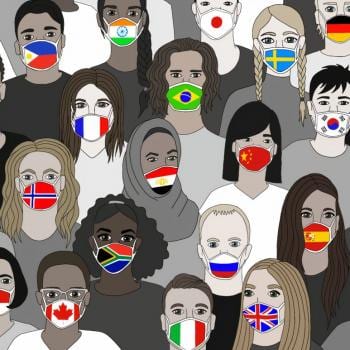 was delighted to be invited to an international discussion about creating more empathy between people of different religions. The panel consisted of a Christian (that was me!), an atheist, and three Muslims.
was delighted to be invited to an international discussion about creating more empathy between people of different religions. The panel consisted of a Christian (that was me!), an atheist, and three Muslims.
(You can watch the video by scrolling down.)
The producer of the panel was Edwin Rusch, who is the founding director for the Center for Building a Culture of Empathy. Edwin’s goal is to create “a worldwide culture of empathy and compassion.” Through articles and videos, the website explores the arts, sciences, religion, and much more.
Sheima Salam Summer brought the panel together. I was introduced to Sheima about a year ago through our mutual friend, Lindsey Paris-Lopez. Lindsey suggested that I read Sheima’s book How to Be a Happy Muslims. As I state in the video, it’s a wonderful book that has taught me to be a happier Christian. I’m grateful for Sheima’s friendship, her book, and her blogging at howtobeahappymuslim.com.
Our other panelists were my new Muslim friends Amal Damaj and Eric Abdulmonaim Merkt. Amal enjoys studying the Quran and discovering connections between some of its verses and modern research findings in science and sociology. Abdulmonaim is a Sufi Muslim. He has a master’s degree in religion and a degree in philosophy.
I brought René Girard and mimetic theory into the discussion. Although not always explicit, I soon discovered that the principles of mimetic theory were permeating our discussion. So, from the conversation, I decided to make a top 10 list of the ways that that mimetic theory can help foster empathy across our religious and atheist traditions:
- Girard’s mimetic theory, and the recent discovery of mirror neurons, help us better understand empathy as a natural process, but that there are positive and negative aspects to it. For example, in the same way we can imitate a smile, we can imitate a scowl.
- The Judeo-Christian-Islamic tradition leads us to empathize in a positive way with the poor, weak, marginalized, and scapegoats of human culture.
- Atheism’s empathy comes from underlying values in our common humanity.
- Islam’s empathy is based on receiving the abundant mercy of God who has infinite empathy for creation.
- Christianity’s empathy is based on God in Jesus walking in human shoes/sandals. Since we recorded the discussion during Holy Week, I discussed Jesus empathizing with our pain and suffering on Good Friday.
- Empathy can help us overcome the scapegoat mechanism.
- To “know thy self” is to “know thy self” in relationship to others.
- The function of Satan the Accuser plays a similar role in Judaism, Christianity, and Islam – to encourage us to mimic the satanic accusation against our scapegoats.
- We can avoid creating an identity “over-and-against” another group by creating an identity that is “with” another group.
- Creating interfaith empathy and an identity that is “with” another group can be fostered by bringing people together to work for a common good. This is a form of positive mimesis and empathy. Eboo Patel’s Interfaith Youth Core is a good example.
We talked about so much more! I’d love to know if this discussion stirred up any comments or questions for you about empathy in relation to mimetic theory or interfaith dialogue. Please leave your comments below!











